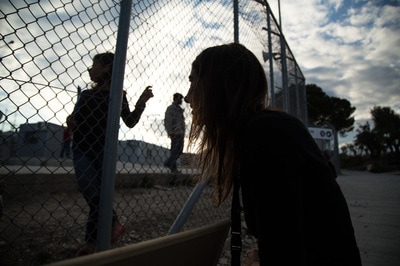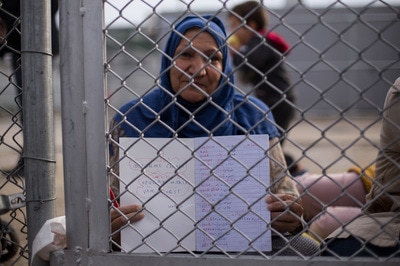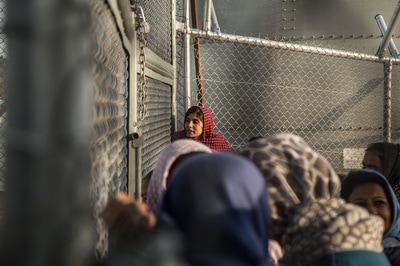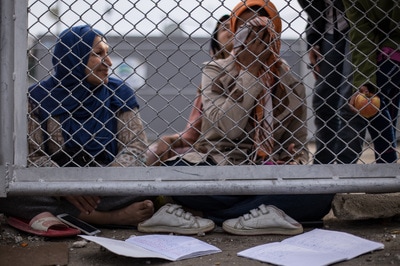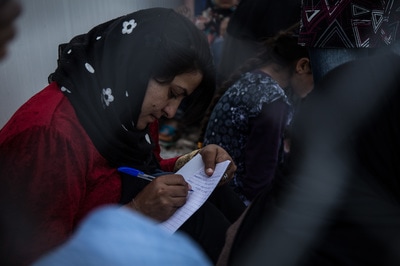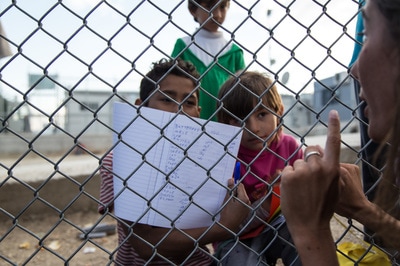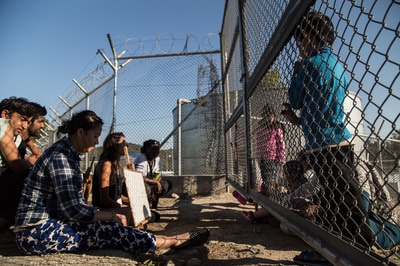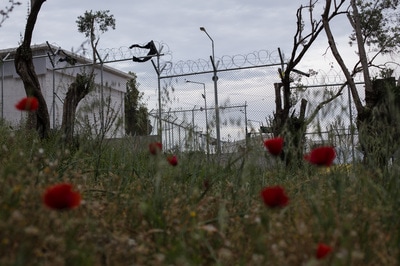Through the Fence
The island of Lesvos in Greece has in recent years been the epicenter of sea crossings for hundreds of miles of migrants seeking refuge in Europe fleeing war and humanitarian crisis in their home countries. Last year more than a million people tried the dangerous cruise, this year they tried about 330,000, according to UNHCR data.
But the story does not end on these statistics or in the enormous number of dead, life continues for all these people who are looking for a new home.
The Moria refugee camp, better known as a detention camp, is located on a military site and is the largest on the island, with a capacity for 3,500 people but normally housing more than 5,000 people.
A Dutch volunteer on her own initiative at the request of the refugees to learn a language to be able to communicate their self, began to teach english classes, every day at 6 pm, began with a small blackboard, distributing pens and notebooks, with a small group of students of diverse ages and nationalities that was increasing day by day, with the help of 2 refugees to whom she also teaches english, who officiated as translators
The classes gave them behind the fence, because they did not allow the entrance to the camp nor to the refugees the exit.
In Moria is not allowed the audiovisual record, so the work was done hiding the camera, some photographs were deleted by military and later recovered with file recovery programs.
http://www.marieclaire.com/culture/news/a23622/the-big-picture/
© Sebastian Gil Miranda Photography - All rights reserved
The island of Lesvos in Greece has in recent years been the epicenter of sea crossings for hundreds of miles of migrants seeking refuge in Europe fleeing war and humanitarian crisis in their home countries. Last year more than a million people tried the dangerous cruise, this year they tried about 330,000, according to UNHCR data.
But the story does not end on these statistics or in the enormous number of dead, life continues for all these people who are looking for a new home.
The Moria refugee camp, better known as a detention camp, is located on a military site and is the largest on the island, with a capacity for 3,500 people but normally housing more than 5,000 people.
A Dutch volunteer on her own initiative at the request of the refugees to learn a language to be able to communicate their self, began to teach english classes, every day at 6 pm, began with a small blackboard, distributing pens and notebooks, with a small group of students of diverse ages and nationalities that was increasing day by day, with the help of 2 refugees to whom she also teaches english, who officiated as translators
The classes gave them behind the fence, because they did not allow the entrance to the camp nor to the refugees the exit.
In Moria is not allowed the audiovisual record, so the work was done hiding the camera, some photographs were deleted by military and later recovered with file recovery programs.
http://www.marieclaire.com/culture/news/a23622/the-big-picture/
© Sebastian Gil Miranda Photography - All rights reserved

